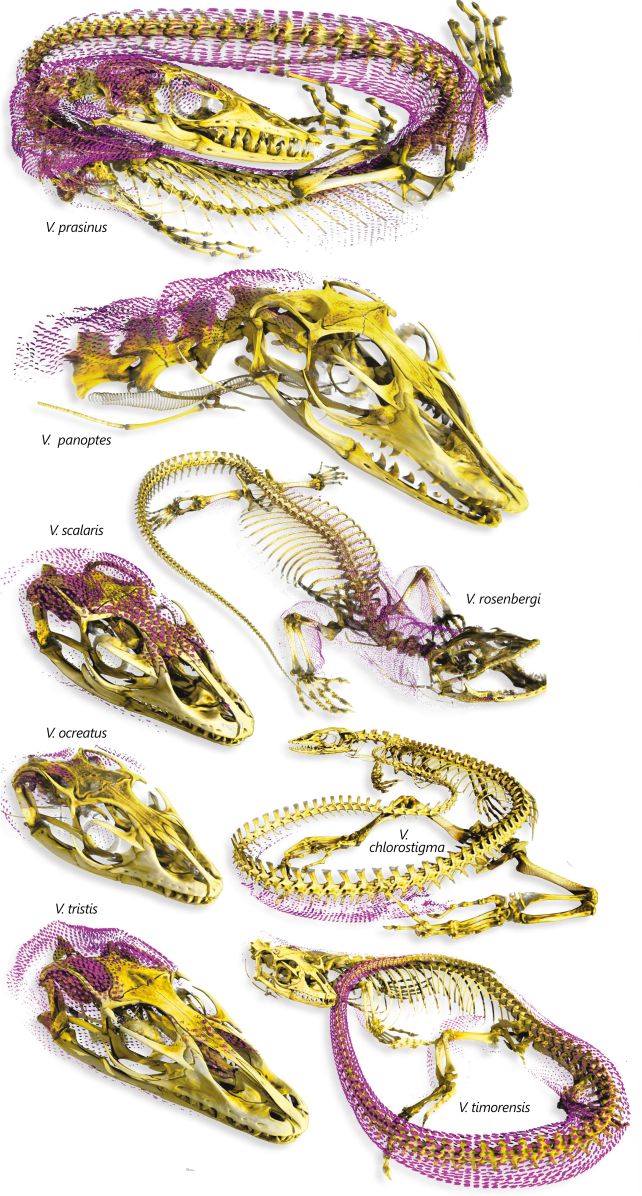An Australian lizard in the same genus as the komodo dragon has been found harboring secret bone chainmail under their scaly skin.
Goannas – a name that encompasses several Australian species – are not the only monitor lizards with this fascinating adaptation, either. A wild new study has found tens of monitor lizard species sporting hidden osteoderms; tiny bones that may perform any number of functions from protective armor to thermoregulation.
Osteoderms themselves are not a new discovery, though they are poorly understood and cataloged. They're known in crocodilians, lizards, frogs, komodo dragons, even some mammals. But their discovery in these monitors has come as a surprise to biologists.
"We were astonished to find osteoderms in 29 Australo-Papuan monitor lizard species that had never been documented before," says evolutionary biologist Roy Ebel of Museums Victoria Research Institute and the Australian National University in Australia. "It's a fivefold increase in known cases among goannas."
Related: Komodo Dragon Teeth Have Iron Caps For Sharpness, Scientists Discover

The researchers conducted a census, investigating more than 2,000 lizard specimens housed in museums around the world, including Museums Victoria in Australia, the Florida Museum of Natural History in the US, and the Natural History Museum Berlin in Germany.
Because osteoderms are hidden and embedded in the skin, Ebel and his colleagues conducted non-invasive, non-destructive micro-CT scans. Their results suggest that up to half of all lizard species may have osteoderms. But the findings also raise some questions.
The most obvious reason lizards and other reptiles may have evolved these armored skins is to protect themselves against attack, but the distribution of these tiny bones isn't consistent. Some lizards are armored from nose to tail-tip. Some are more heavily armored around their heads and necks; while others have the most osteoderms along their tails.

Other roles osteoderms might play in the lizards' lives could involve the sequestration of calcium, mobility, and temperature regulation. Studying them may help us better understand how different lizards in different parts of the world adapted to their environments.
"What's so exciting about this finding is that it reshapes what we thought we knew about reptile evolution," says herpetologist Jane Melville, Museums Victoria Research Institute Senior Curator of Terrestrial Vertebrates.
"It suggests that these skin bones may have evolved in response to environmental pressures as lizards adapted to Australia's challenging landscapes."
The research has been published in the Zoological Journal of the Linnean Society.
